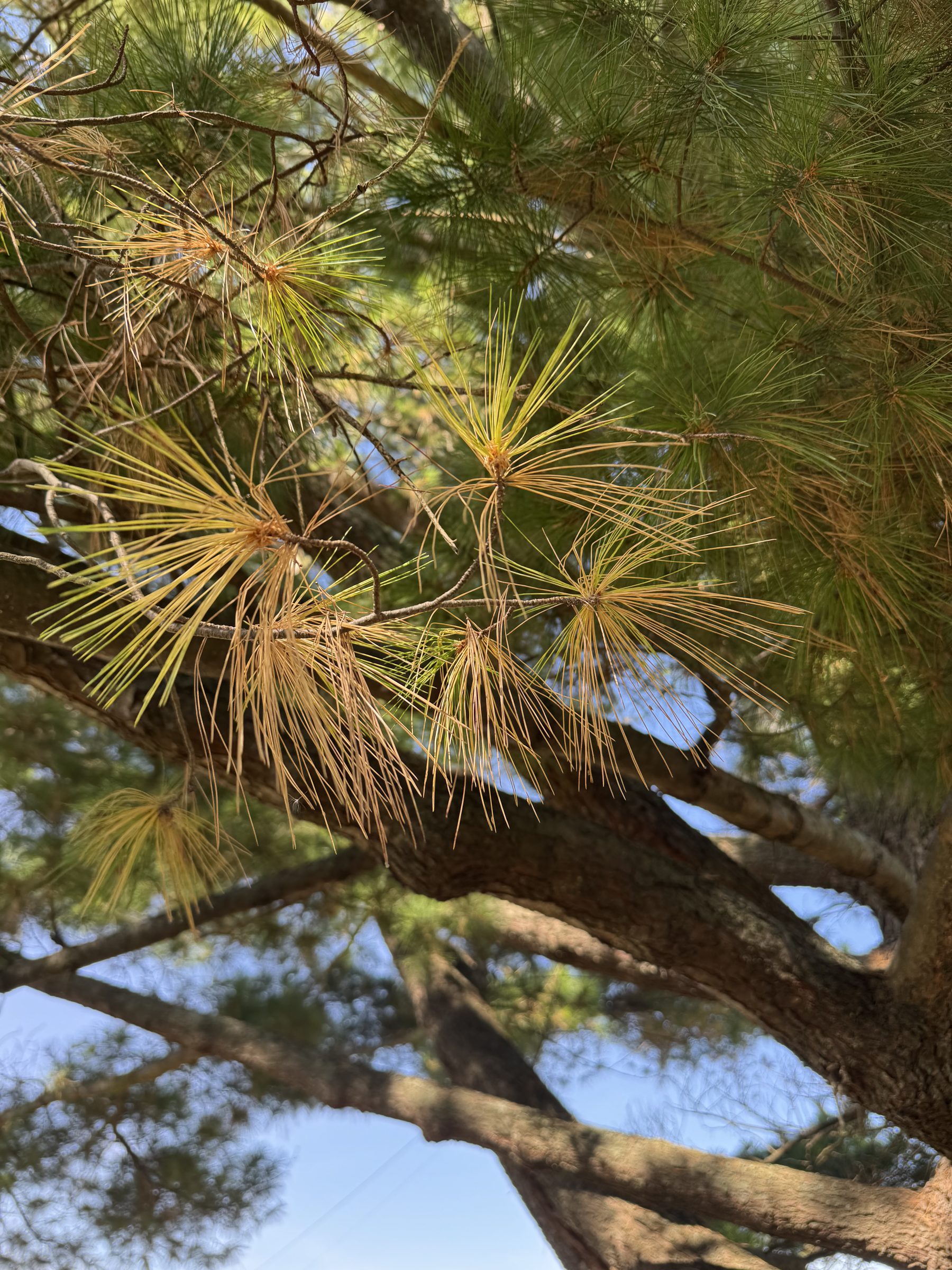
Overview
Despite their name, evergreen needles do not stay green forever. Older, inner needles discolor and drop off after one or more years, depending on the species.
Sometimes the drop occurs slowly; other times, large numbers of needles yellow simultaneously in late summer or early fall, making for a striking spectacle. Because the condition is triggered by the weather and the season, many evergreens are likely to show symptoms at the same time. This phenomenon could easily be mistaken for disease or insect damage.
Each species of evergreen tends to keep its needles for a defined length of time. Thus, cycles or patterns of needle drop develop for each species, although variation exists from tree to tree and from year to year.
Symptoms and Effects of Fire Blight
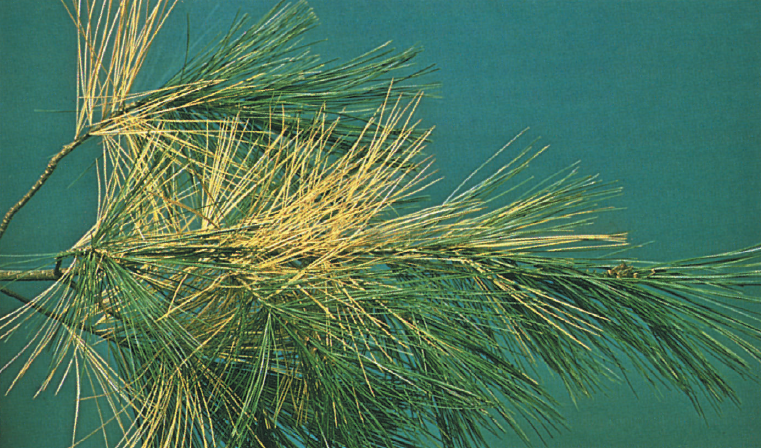
The yellow foliage on this white pine resulted from the aging of the previous years needles. Note that the needles are uniformly yellow and free from fungal spots, and that current season growth at the tip of the branch is still green and free of blemishes.
White Pines
White pines are the most dramatically affected trees. This species typically bears three years’ needles in summer and two years’s needles in winter. However, vigorous shoots may have only one year’s needles still attached by November of any given year. These needles may not extend the length of the branch. Third-year white pine needles turn yellow throughout the tree. The tree will appear particularly unhealthy if the yellowed needles outnumber the green ones of the current season. But this is natural.
Austrian and Scotch Pine
Austrian and Scotch pine usually retain needles for three years. Red pine ordinarily drops its needles in the fourth year. Thus, three or four years’ green growth will outnumber yellowed needles, even at peak periods, and none of these species will appear as unhealthy as the white pine periodically does.
Arborvitae (White Cedar)
Arborvitae needles usually turn brown rather than yellow when they age, and often remain attached much longer than matured pine needles.
Yew
Yew needles turn yellow and drop in late spring or early summer of their third year.
Spruce and Fir
Spruce and fir needles also yellow and drop with age, but since these trees retain their needles for several years, needle drop is often not visible unless you search for it on inner branches.
What Causes Seasonal Needle Drop
The yellowing and drop of evergreen needles described above occurs naturally. It is important that you do not confuse this natural seasonal needle drop with various disease and insect problems that can seriously reduce the vitality and esthetic value of the tree. The fact that it is a seasonal occurrence and that the symptoms are distributed throughout the interior portion of the tree are helpful clues to proper diagnosis.
Still, you should examine the needles carefully if you have any doubt. Needles that yellow and drop due to age may have occasinoal spots and blemishes but nothing more. Old needles sometimes show mottled brown coloration from invasion by saprophytic (nondisease) microorganisms.
Since several fungal diseases in Wisconsin can cause severe needle discoloration and drop, you should be alert for their presence, especially if spots are developing on the current season’s needles.
Mites often cause non-seasonal needle drop, particularly on spruce. Needles will become yellowish or brown. Alight webbing will develop with heavy infestations. If you suspect mites, hold a sheet of white paper under a branch and tap the branch sharply. The mites will fall to the paper where they can be seen.
Needle miners of spruce produce clusters of dried, mined needles, usually webbed together. They have also been found affecting arborvitae in Wisconsin.
Aphids may cause severe yellowing of white pine needles, particularly new needles.
Some forms of herbicide injury can also lead to needle yellowing and drop.
Controlling Seasonal Needle Drop
Control is not possible, nor would it be beneficial. However, you may take precautions to prevent injury to the younger foliage to maintain tree vitality. For instance, irrigating evergreens thoroughly before the ground freezes will help to minimize the possibility of winter injury through desiccation. Examine evergreens periodically for evidence of insect and disease problems.
Authors: P.S. McManus, M.F. Heimann
Rev: 06/2006
Item number: A2614

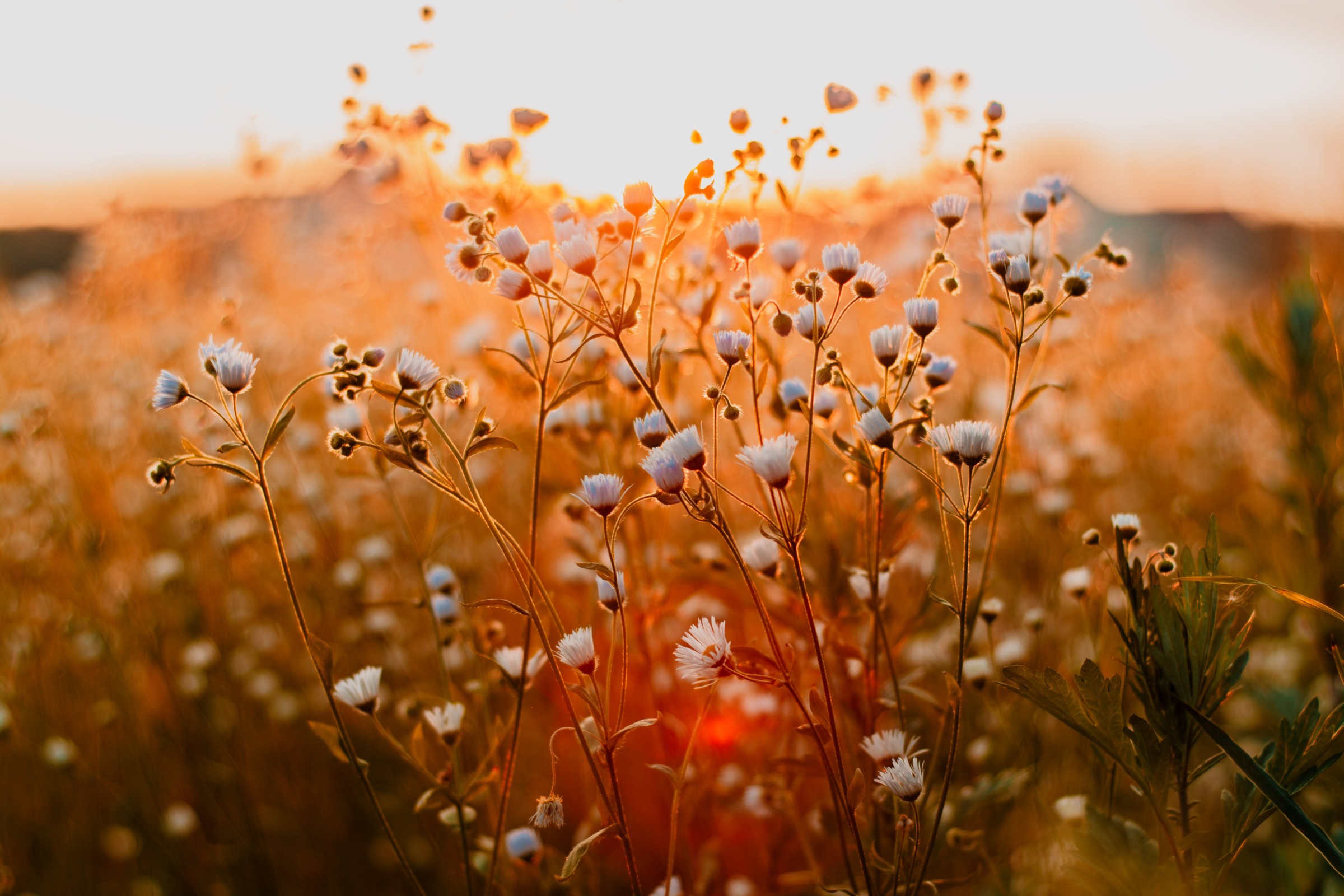
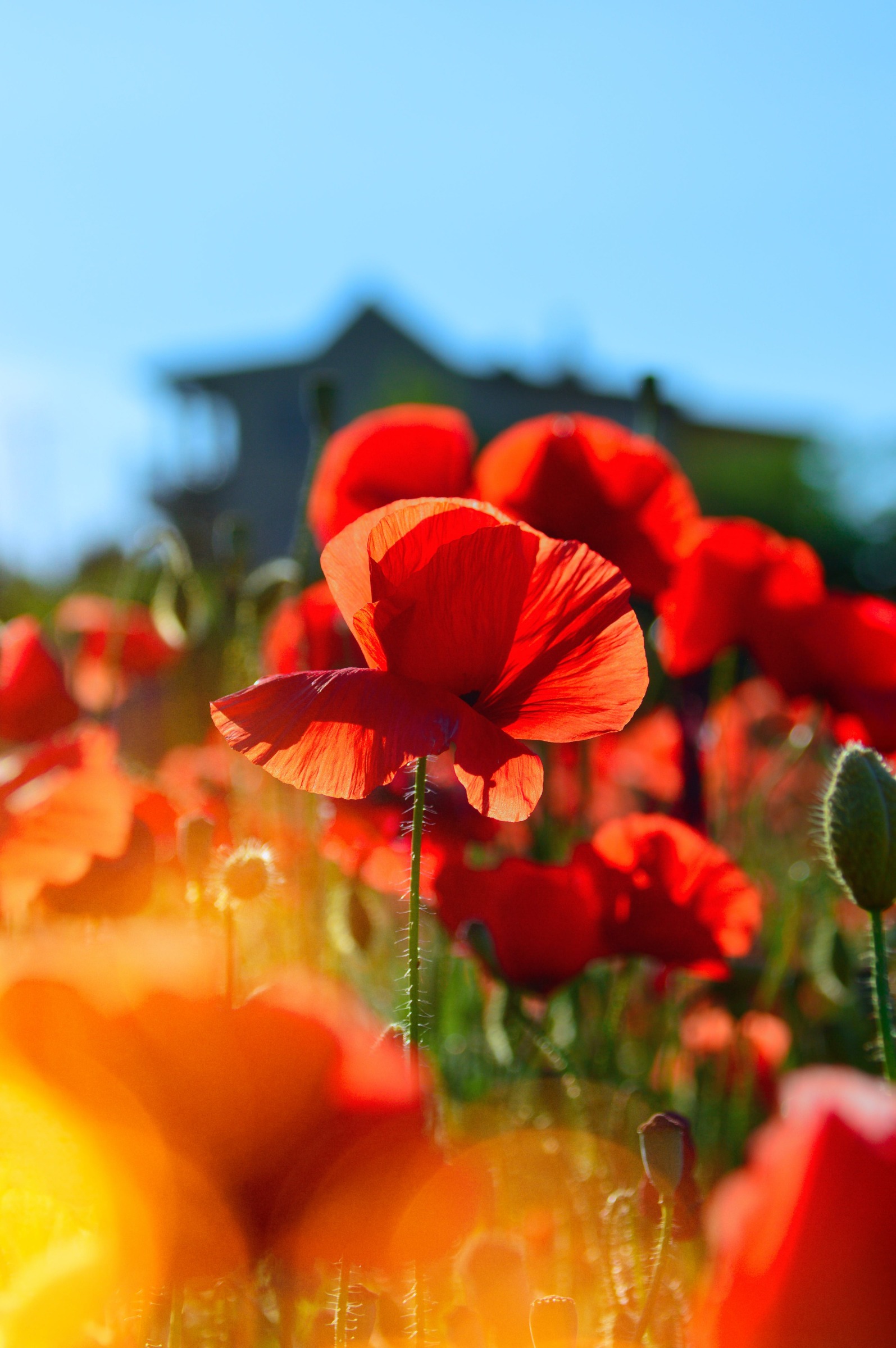
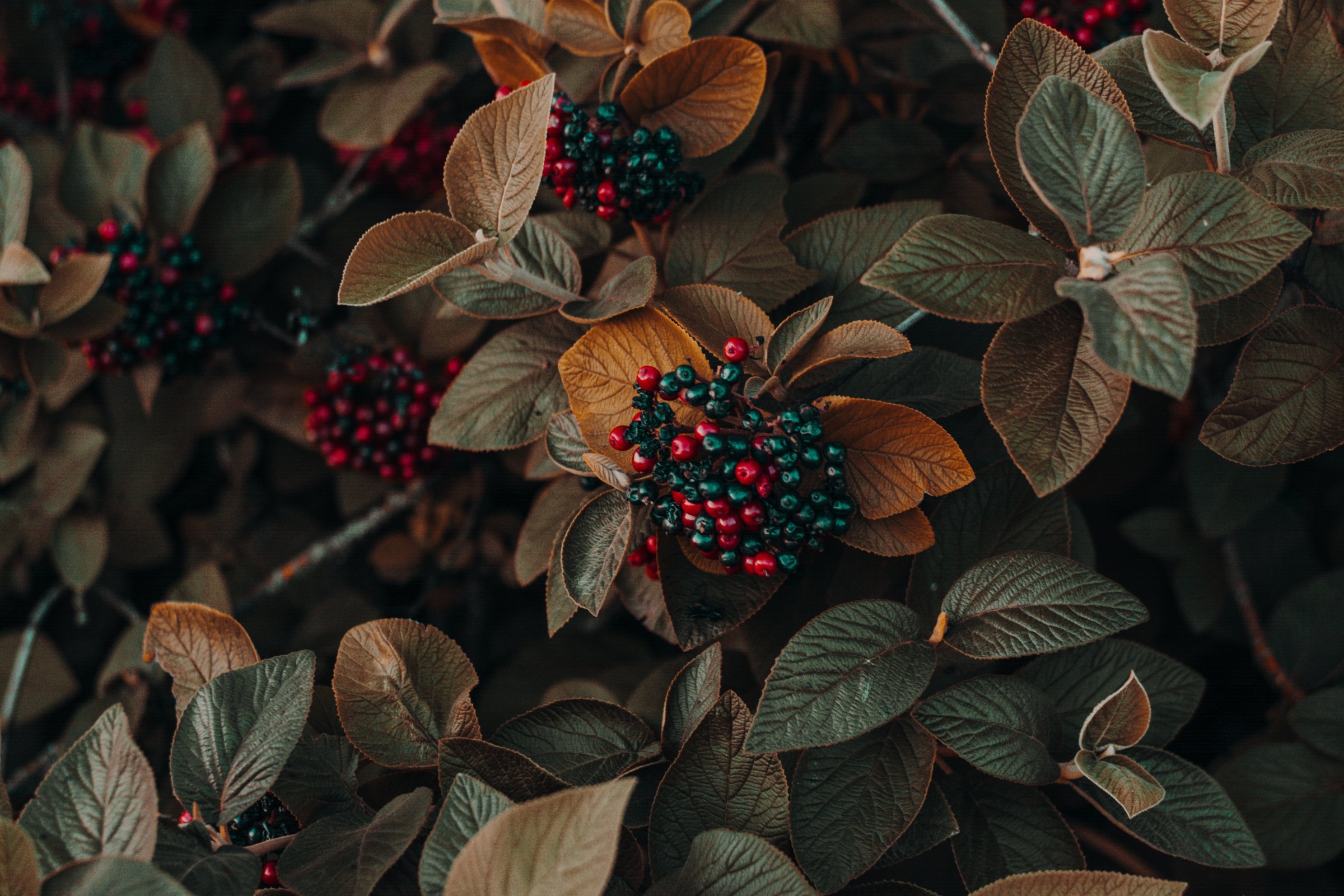
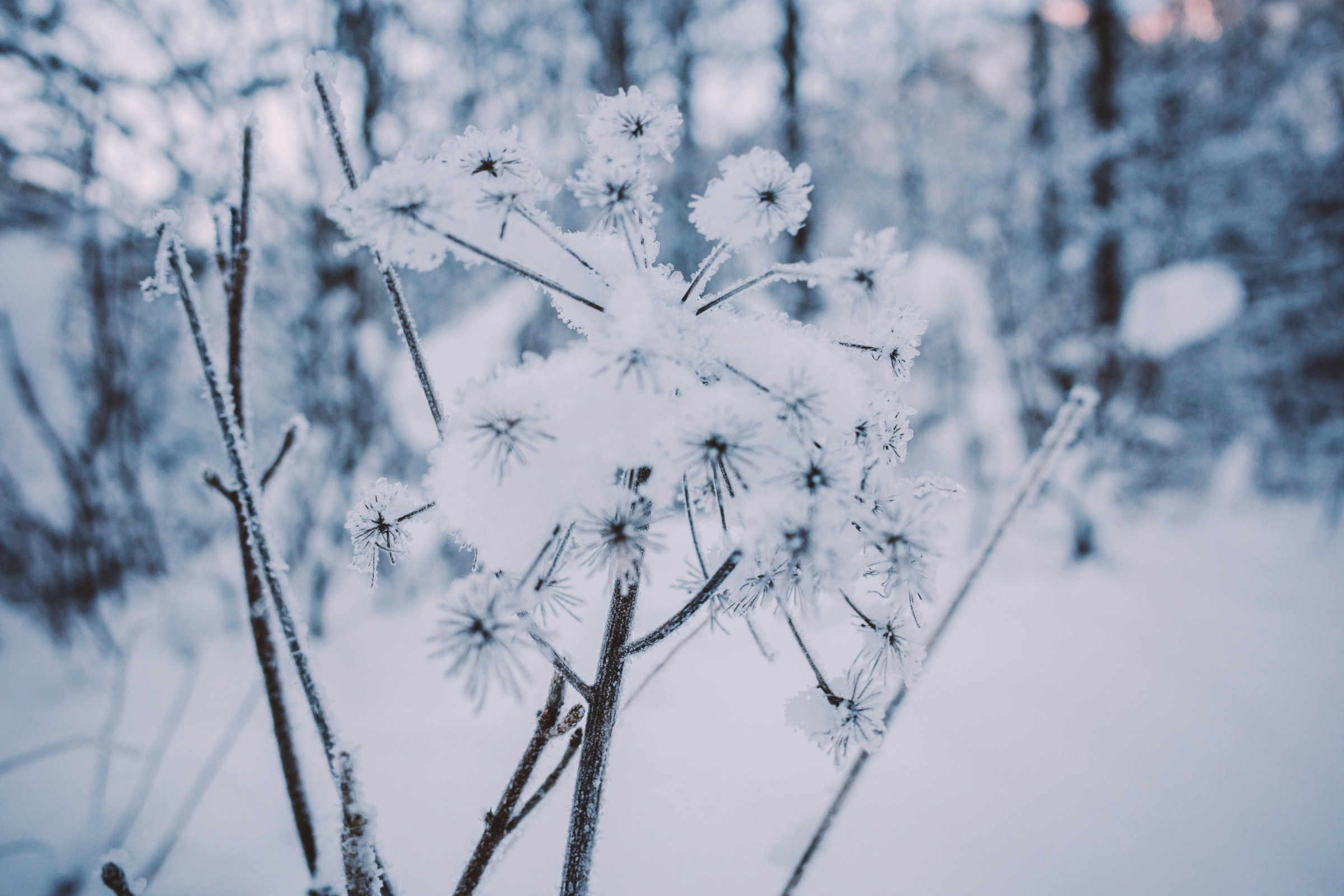
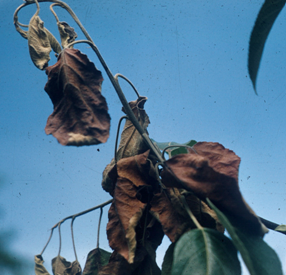 Fire Blight
Fire Blight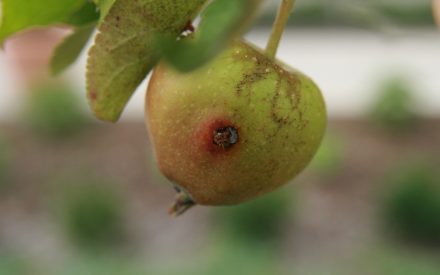 Apple Pest Management for Home Gardeners
Apple Pest Management for Home Gardeners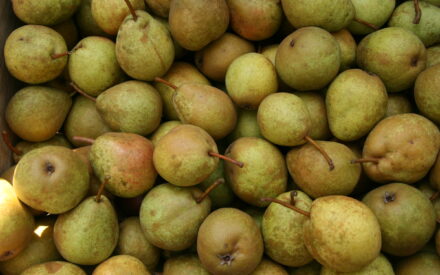 Growing Pears in Wisconsin
Growing Pears in Wisconsin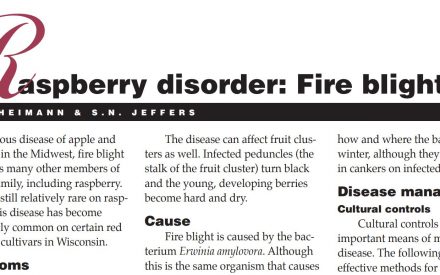 Raspberry Disorder: Fire Blight
Raspberry Disorder: Fire Blight


